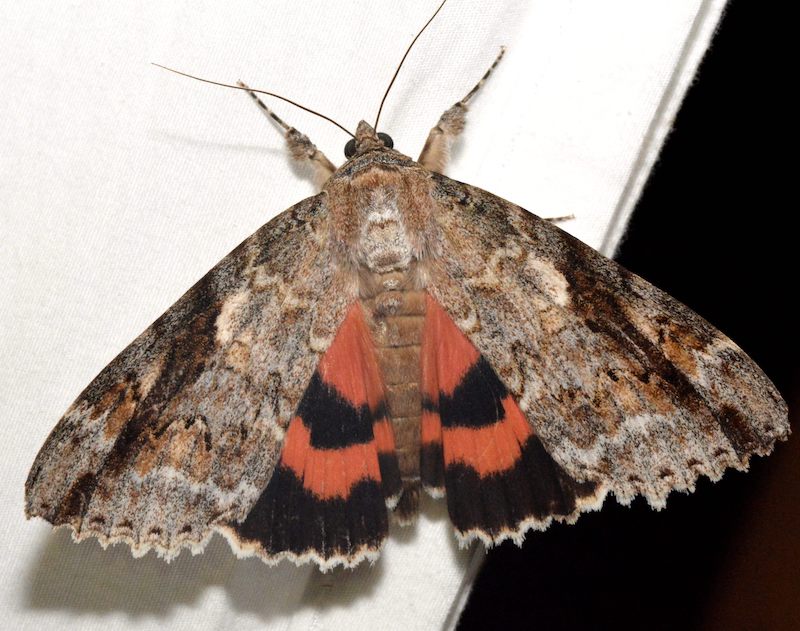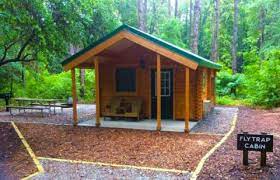Carolina Beach Moth Survey
Over two decades ago, Steve Hall and Bo Sullivan conducted a multi-year survey of sites along the North Carolina coast as part of an effort to assess the impact of spraying to control the spread of the invasive Spongy Moth (Lymantria dispar) in the state. One of the sites that they heavily sampled was Carolina Beach State Park. Located south of Wilmington in New Hanover County, the park lies on a narrow strip of land between the Cape Fear River estuary and the ocean. Its primary habitat type is coastal fringe sandhills, but the park contains a variety of xeric habitats.

Among the species found in the park that are listed as Significantly Rare in North Carolina by the Natural Heritage Program are:
- Catocala marmoata (Marbled Underwing) - A habitat specialist in cottonwood-containing forests, it probably feeds on Swamp Cottonwood (Populus heterophylla) in our state. Its habitat is threatened by changes in the flood regime due the construction of dams, and it may have been negatively impacted by spraying in the region to prevent the spread of the Spongy Moth.
- Drasteria graphica (Graphic Moth) - Found in xeric sandhills only in the extreme southern part of North Carolina’s outer coastal plain, it probably feeds on pinweed (Lechea). It has only been recorded in 3 counties, and is threatened by coastal development and sea level rise.
- Zale declarens (Dixie Zale) - Found only on the barrier islands and a couple inland sites, including the state park. It feeds on Live Oak (Quercus virginiana and probably also Q. geminata), and is associated with maritime forest and scrub habitats. Due to its restricted range, it is considered highly vulnerable to hurricanes, sea level rise, and coastal development.
- Pyrrhia aurantiago (Orange Sallow) - Restricted to dry to xeric sandy habitats in the coastal plain, including sandhills and maritime forest, the species hasn’t been recorded in the state since 1999. It feeds on Oak-leech (Aureolaria), which is associated with Turkey Oak (Quercus laevis). The Orange Sallow is considered historical and possibly extirpated from several states where it once occurred. Overbrowsing by deer and suppression of natural fire regimes have been implicated in its decline, and it may only be secure within federal and state lands where prescribed burning and deer hunting are helping to maintain its habitat.
 These are just a few of the species Stephen Dunn and I will be looking for when we head to the park later this month to begin a follow-up survey. Steve and Bo trapped extensively over a two-year period. While I will not be able to replicate their study in terms of frequency of sampling, I hope to get to the park several times over the next few years. I don't have any experience with trapping, so I am sure I will learn a great deal from this initial trip. Steve is letting me borrow one of his (now vintage) BioQuip traps and Rich Teper is supplying a second trap. Stephen and I also hope to set up a sheet. Park ranger (and co-author of the Beetles of NC site) Jesse Anderson has been instrumental in making the survey possible, providing us with free lodging in one of the park's cabins.
These are just a few of the species Stephen Dunn and I will be looking for when we head to the park later this month to begin a follow-up survey. Steve and Bo trapped extensively over a two-year period. While I will not be able to replicate their study in terms of frequency of sampling, I hope to get to the park several times over the next few years. I don't have any experience with trapping, so I am sure I will learn a great deal from this initial trip. Steve is letting me borrow one of his (now vintage) BioQuip traps and Rich Teper is supplying a second trap. Stephen and I also hope to set up a sheet. Park ranger (and co-author of the Beetles of NC site) Jesse Anderson has been instrumental in making the survey possible, providing us with free lodging in one of the park's cabins.